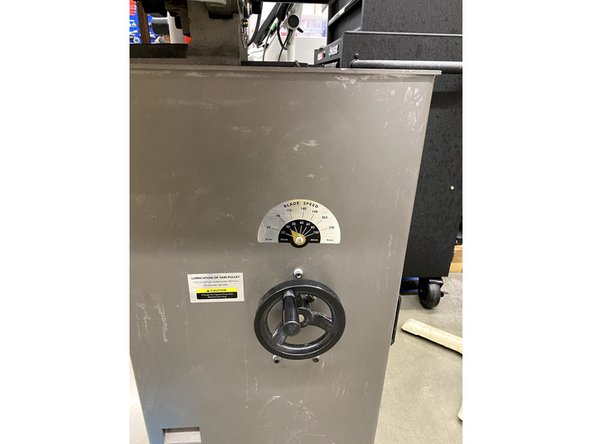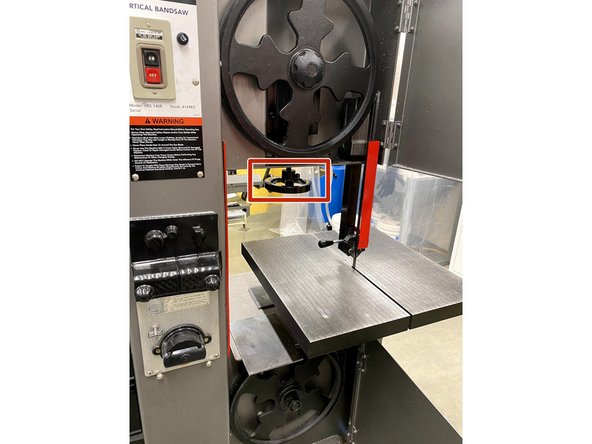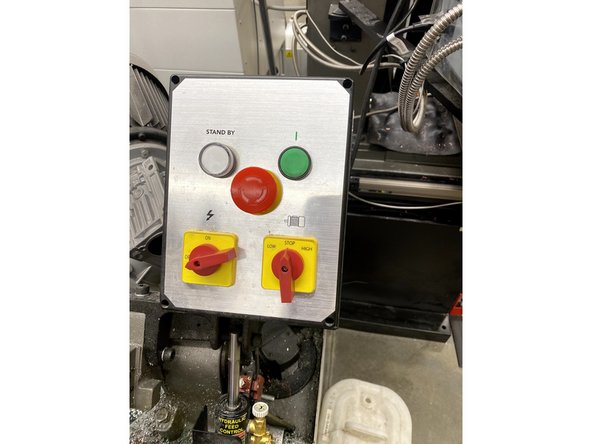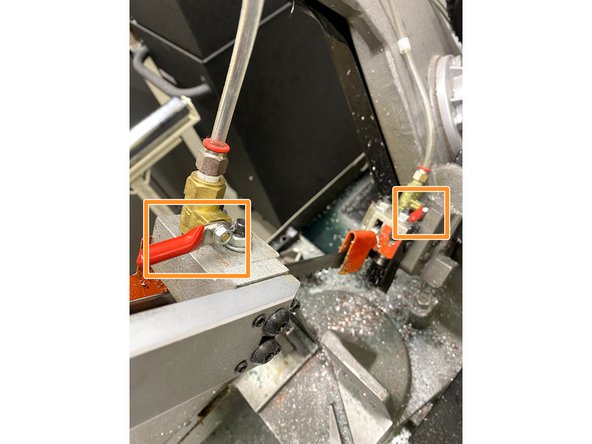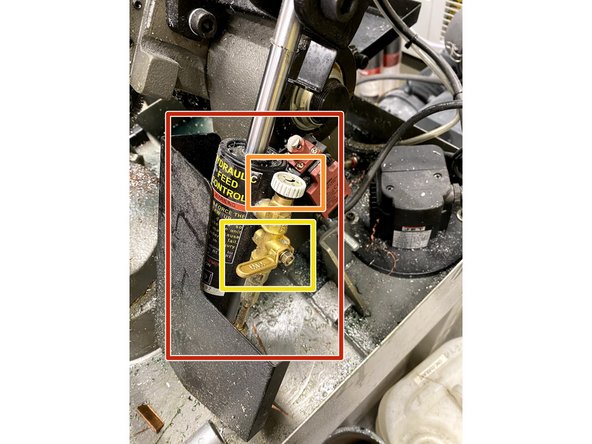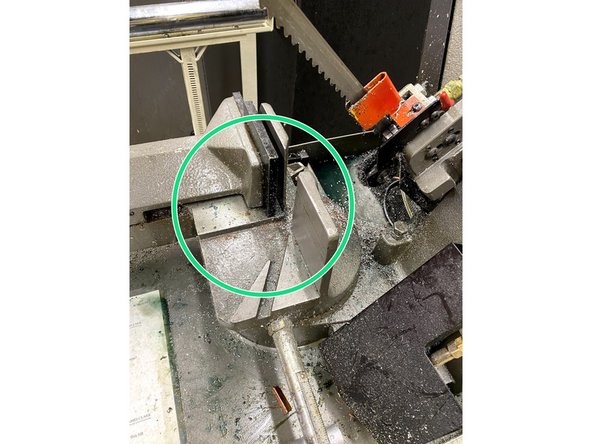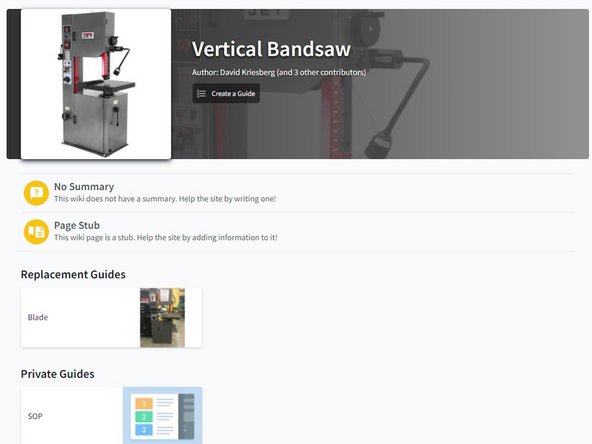-
-
Make sure to complete the LM Daily Responsibilities upon entering/using/leaving the space.
-
-
-
-
This is a vertical bandsaw. It has a continuously cutting blade in the vertical direction.
-
This is the on-off button for the machine.
-
Aluminum, steel, and plastics are allowed. No other materials are, however.
-
-
-
This is the safety guardrail. It should always be 1/4" above the stock on the machine.
-
Adjust the height of the red safety guard with this black knob.
-
-
-
This is the blade adjustment wheel. For harder materials (steel), use a slower speed, and vice-versa for softer materials (aluminum).
-
General practice dictates using 30 for slower and 60 for faster speeds. Also, do not change speed unless machine is running.
-
-
-
Whenever using the horizontal bandsaw and pushing material through the blade, use a push stick to keep your fingies safe.
-
-
-
Use this black knob to loosen the blade in the bandsaw.
-
Next, open both doors, as show, and slowly and safely pull the blade out of the bandsaw.
-
Do this process in reverse to install the new blade.
-
-
-
The horizontal bandsaw differs from the vertical because in instead of the piece moving through a "stationary" blade, this blade moves down and through the piece of material.
-
First, you turn the power knob on. Also, use this black knob and lever to hold your piece of stock firmly.
-
Next, you select the blade speed. (based again on hard or soft material)
-
Then, you turn the blade on with the green button on the panel.
-
Next, turn the coolant on for the blade.
-
After you have done these steps, you are about ready for cutting.
-
-
-
This is the piston that lets the blade fall.
-
This lever will let you control if the blade falls or stops.
-
This dial lets you control the speed at which the blade falls.
-
Lets the blade fall slowly through the stock as to not mess up the blade or stock.
-
When the blade falls, it will automatically stop when it falls to the bottom of the range of motion it has
-
-
-
On the horizontal bandsaw, you want to make sure the blade is within the green on the blade tension gauge.
-
-
-
All maintenance Dozukis for the bandsaws can be found in the link below.
-
-
-



